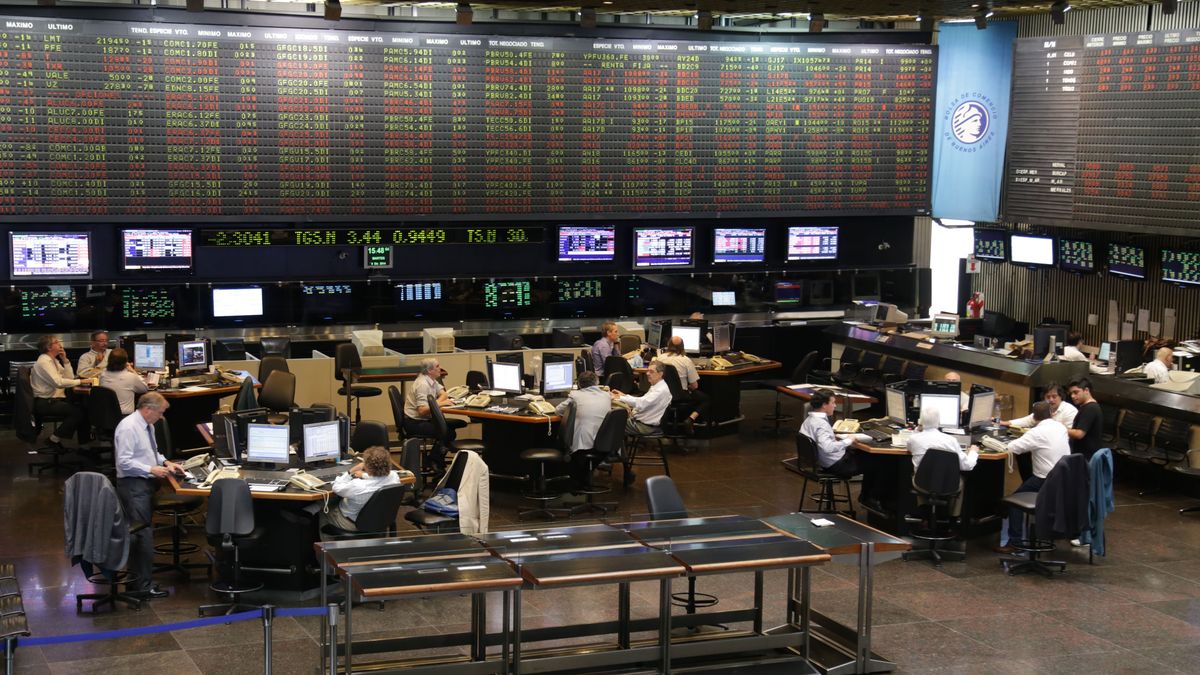The Buenos Aires stock market falls this Monday, April 15 in the midst of a cautious global stance after the counterattack on the weekend of Iran against Israel. Meanwhile, dollar bonds plummet up to 5.5% and the risk country It is heading to 1,350 basis points. However, in the local context, positive expectations about the country’s financial future created a good framework for the stock market.
He S&P Merval index loses 0.9% due to profit taking, 1,233,884,040 units, after winning a 2.5% during last week and ending March with a strong rise in 19.6%.
“It will be important to take into account the development of tensions in the Middle East, between Iran and Israel, given the risk aversion of investors in this regard,” said clearing and settlement agent Puente.
Last week the Argentine statistics body –INDEC– unveiled a March inflation data with a downward trend and the Central Bank (BCRA) lowered its reference rate due to concrete signs of the slowdown in the retail price rate.
ADRs
In that context, Argentine papers listed on Wall Street operate with drops of up to 4.8%headed by Central Portfollowed by Edenor (-4.1%) and the Galicia Financial Group (-4.1%). Meanwhile, the only title that rises is the IRSA (+1.2%).
Bonds and country risk
In the fixed income segment, dollar bonds fall to 6.6%led by Global 2046, followed by the Global 29 (-5.5%) and the Bonar 2041 (-3.7%). In that context, the risk country measured by the JP Morgan advances 0.8% to 1,342 basic points.
The consulting firm Quantum, founded by the former Secretary of Finance, Daniel Marxhe wondered if Argentine papers, particularly the 10-year global ones, still have a “travel.”
And the answer, despite the sharp drop in yields, especially in the short section of the curve, was yes. Compared to other emerging bonds, one analysis says, ““They continue to be in the group of those with the highest spread.”
With a 16.9% total return (including spread and the “risk-free” rate of US bonds at the same horizon, the Argentine 10-year globals yield less than 29.8% of their peers from Ukraine (a country besieged by war), 27.5 % of Bolivian bonds, 19.5% of those of Ecuador and 18.1% of those of Zambia, but this profitability is still higher than or close to triple that of bonds from other emerging markets such as Uruguay, Chile, the Philippines , Peru and Mexico, and yield two and a half times what similar papers yield from Paraguay, Colombia and Brazil (see below).
The hypothesis that the rally in recent months in Argentine bonds is due to local demand is “quite reasonable,” says the analysis, if one takes into account that given the lack of profitable options for the placement of pesos and the restrictions still in force due to the exchange rate (and others related to regulations of institutional portfolios), ““Argentine investors opt for this type of paper in search of returns.”
Source: Ambito
I am a 24-year-old writer and journalist who has been working in the news industry for the past two years. I write primarily about market news, so if you’re looking for insights into what’s going on in the stock market or economic indicators, you’ve come to the right place. I also dabble in writing articles on lifestyle trends and pop culture news.




